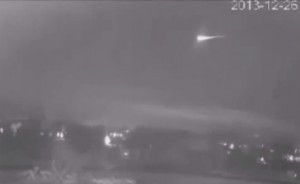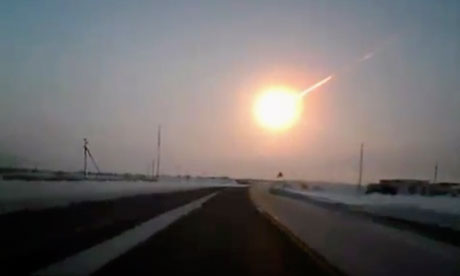OF THE
TIMES
Below you can see one of the discovery images of 2014 AA. The asteroid is the streak just left of center, surrounded by the purple circle.It is virtually certain that 2014 AA hit the Earth's atmosphere on 2014 Jan. 2.2 +/- 0.4, as demonstrated by independent calculations by Bill Gray, the MPC and Steve Chesley (JPL). According to Chesley, the impact locations are widely distributed, most likely falling on an arc extending from Central America to East Africa, with a best-fit location just off the coast of West Africa on Jan. 2.10. 2014 AA was unlikely to have survived atmospheric entry intact, as it was comparable in size to 2008 TC3, the only other example of an impacting object observed prior to atmospheric entry.


Comment: So rare and yet, so commonly used of late to explain 'mystery booms' ...
SOTT.net sez 'BS alert!'
Given that fireballs are raining all over the place, isn't it far more likely these folks are hearing overhead meteor explosions?
Multiple fireballs: Over 1,400 reports in 48 hours from coast to coast; booms; ground shaking, house shaking explosion